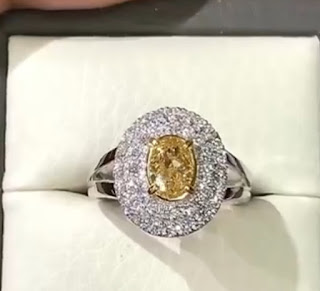Diamond vs. Moissanite vs. Lab-Grown Diamonds: Which Should You Choose?
When shopping for the perfect gemstone, whether for an engagement ring or a special piece of jewellery, you're likely to come across three main options: natural diamonds, moissanite, and lab-grown diamonds. Each has its own unique appeal, and understanding their differences can help you make an informed decision. Let's break down the key characteristics of each.
1. Natural Diamonds: The Timeless Classic
Natural diamonds have long been the symbol of luxury, commitment, and enduring beauty. Formed over billions of years deep within the Earth, these stones have a storied history and are known for their hardness, brilliance, and rarity.
Pros:
- Durability: Natural diamonds rank 10 on the Mohs scale of hardness, making them the hardest known material. This means they can withstand daily wear and tear with ease.
- Resale value: Since diamonds are considered a precious commodity, they typically hold their value over time, especially if they are of high quality.
- Tradition: There's a strong emotional and cultural value attached to diamonds, particularly for engagement rings.
Cons:
- Price: Natural diamonds are the most expensive option due to their rarity and the costs associated with mining.
- Ethics: Diamond mining has been linked to environmental harm and conflict issues in certain regions, leading some to seek more sustainable alternatives.
2. Moissanite: The Budget-Friendly Sparkler
Moissanite is a naturally occurring mineral, but it's incredibly rare in its natural form. Most moissanites used in jewelry are lab-grown, offering a more affordable alternative to diamonds. While it may look similar to a diamond at first glance, it has some distinct characteristics.
Pros:
- Affordability: Moissanite is significantly cheaper than natural or lab-grown diamonds, making it a great option for those on a budget.
- Brilliance: Moissanite has a higher refractive index than diamonds, meaning it can sparkle even more in certain lighting conditions.
- Durability: Ranking 9.25 on the Mohs scale, moissanite is nearly as hard as diamonds, making it durable for everyday wear.
Cons:
- Different sparkle: While moissanite’s brilliance is often praised, it has a different sparkle than diamonds. Its "rainbow" light reflections are sometimes seen as less desirable by those looking for a true diamond-like appearance.
- Perceived value: Since moissanite is not a diamond, it doesn’t hold the same prestige or market value, which may be a consideration for some buyers.
3. Lab-Grown Diamonds: The Ethical Choice
Lab-grown diamonds are chemically and physically identical to natural diamonds, but they are created in a lab using advanced technology. These diamonds are becoming increasingly popular due to their ethical sourcing and lower price compared to natural diamonds.
Pros:
- Ethical sourcing: Lab-grown diamonds don't involve mining, making them a more sustainable and ethical choice for environmentally conscious buyers.
- Lower cost: While they are real diamonds, lab-grown stones can cost 20-40% less than their natural counterparts, offering a more budget-friendly option.
- Same properties as natural diamonds: Lab-grown diamonds have the same hardness, brilliance, and sparkle as natural diamonds, meaning you don’t have to sacrifice quality for a lower price.
Cons:
- Resale value: Lab-grown diamonds generally have a lower resale value compared to natural diamonds.
- Not "natural": For some, the fact that lab-grown diamonds are created in a lab rather than through a natural process may detract from their sentimental or symbolic value.
Which One is Right for You?
- Budget-conscious buyers may find moissanite to be a great option, as it offers incredible sparkle at a fraction of the price of a diamond.
- If you're looking for ethical and sustainable options, lab-grown diamonds provide the beauty of a diamond without the environmental and ethical concerns associated with mining.
- For those who prefer tradition and investment value, a natural diamond might be worth the higher price, especially if you’re seeking a gemstone with lasting financial value.
Each of these gemstones has its unique advantages and potential drawbacks. Ultimately, the best choice comes down to personal preference, budget, and values. Whether you’re drawn to the brilliance of moissanite, the ethical appeal of lab-grown diamonds, or the timelessness of natural diamonds, there’s a gemstone out there that perfectly fits your vision.
Comment below to let us know which one would you choose.




